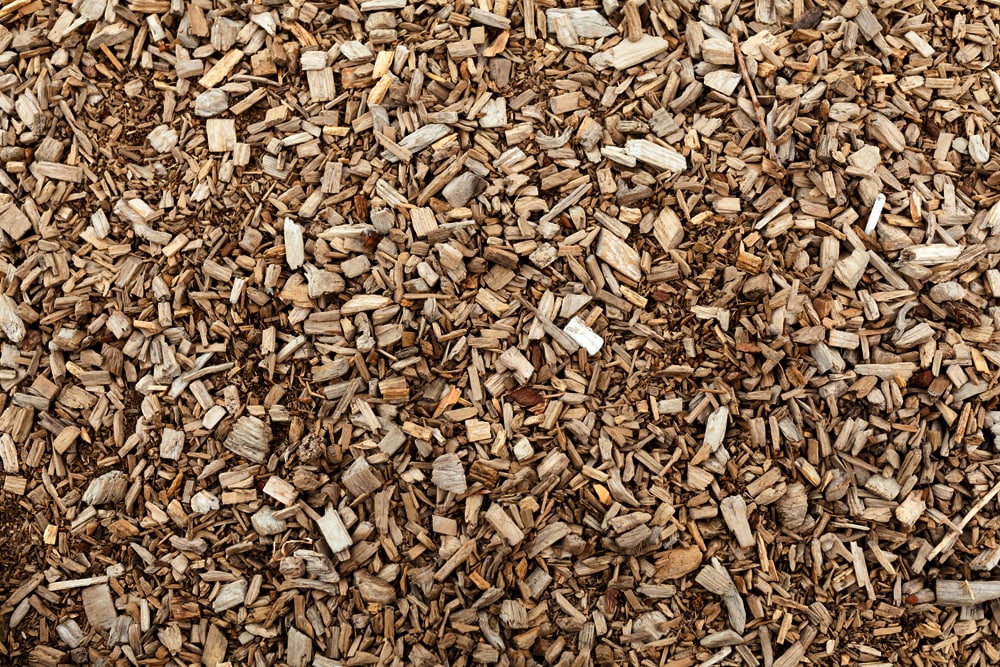Coloured mulches have become increasingly popular over the years thanks to their ability to improve soil health and enhance garden aesthetics. But not everyone is sold on coloured mulches and many are wondering whether these materials are actually safe for the environment. The dyes used on coloured mulches are just one of the things homeowners are concerned with along with the sources of wood chips that may be contaminated with toxic substances.
In this article, we’ll take an in-depth look at coloured mulches to see whether they’re detrimental for the environment or if they can be safely used by even the most prudent of gardeners.
What kind of dye is used in coloured mulches?
Coloured mulches are usually dyed with two types of colourants and these are carbon-based dyes and iron oxide-based dyes. Iron oxide dye is a compound of both iron and oxygen which oxidises and releases iron into the soil. If the mulch is wet, any dye that has not been absorbed by the mulch will come off with contact. Carbon dyes, on the other hand, are colourants that are found in the majority of ink and cosmetic products. There are a couple of vegetable-based dyes available on the market which are organic in nature and may be preferred by gardeners who practice eco-friendliness.
As of now, no clear evidence exists regarding the toxicity of the dyes used in coloured mulches. The real concern is the wood chips themselves which, if acquired from impure sources, can introduce toxic substances to the environment.
Where are wood chips sourced from?
The wood used in making coloured mulch is usually sourced from wood pallets, wood scraps, reclaimed wood from construction sites, and other forms of recycled wood. Aside from the benefits of recycling wood waste, these types of wood are already dry and can readily absorb any type of colourant. Now here is where the real issue comes in. Since most of the recycled wood comes from impure sources, naturally they’re contaminated with various chemicals like chromated copper arsenate (CCA) and creosote, a carbonaceous chemical that takes years to break down. Meanwhile, CCA is a chemical used for wood treatment against termites and other pests.
Arsenic-based wood preservatives were banned in 2003, but that didn’t stop wood recyclers from repurposing old wood that’s been treated with CCA. Even wood pallets that have been used to transport CCA can become contaminated with the chemical via spills. CCA treated wood is bad for the environment because it kills beneficial microorganisms like insects, earthworms, soil bacteria, and even seedlings.
How does coloured mulch affect the soil?
Wood is made up of 45-50% carbon, which means it needs nitrogen in order to decompose. This can prove detrimental to the growth of nitrogen-needy plants by taking that essential nutrient right out of the soil. Because of this, coloured mulches are not recommended for use on brand new landscapes or near seedlings as they may rob plants of much-needed nitrogen. Before applying coloured mulches, it’s best to establish a regular fertilization program to ensure there’s enough nitrogen in the soil to support plant growth.
Coloured mulches are also known to decompose much longer than regular mulch. While this may initially save you a bit of time and resources, it may end up blocking moisture and air from reaching your plants due to compaction. To alleviate this, we suggest cultivating coloured mulch (raking and turning it over). Cultivate coloured mulch at least once a week to help rejuvenate organic matter in the soil.
How to know if coloured mulch is safe to use
Do note that not all coloured mulches are harmful to the environment. If you wish to use coloured mulches, look for a mulch supplier that uses safe, non-treated wood chips. Ask where they source their wood from and make sure they don’t use colourants that contain heavy metals or volatile organic compounds. The most eco-friendly mulches come from natural byproducts like pine bark, cedar mulch, or even double or triple shredded mulch.
Take the time to look at the packaging and see if the supplier is a processing mill or a land management company. If the mulches are supplied by the latter, you may want to avoid purchasing those. This is because land management companies cut down trees and shred them to create no-float or long-lasting coloured mulches. They harvest bald and white cypress trees and shred them down to produce mulch. While they do not contain any toxic chemicals, the practice of cutting down trees is still harmful to the environment.


